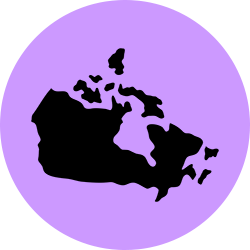Children and youth in out-of-home care:
Key findings from the Canadian Child Welfare Information System.
- Last updated: 2024-05-14
Background
When children and youth in Canada have contact with child and family services, most continue to live at home with their families, sometimes with extra support. Sometimes, children and youth may be placed in a foster home, group home (in Québec, group home refers to unités de vie), or a home with relatives. Placements can last for a short time or a long time. This is called being in out-of-home care.
For some children and youth, out-of-home care is safe and supportive. For others, it can be difficult or traumatic for many reasons, including being away from their family, community, and culture. For many, it can be all these things.
The data in this blog come from a national database about child and family services. Organizations, governments, and communities can use this information to help deliver services. The data are reported here as numbers, percents, and rates. A rate is the number of children in out-of-home care per 1,000 children (and youth) in Canada or in a province or territory.
Key findings

61,104 children and youth
On March 31, 2022, at least 61,104 children and youth were in out-of-home care.
This means that for every 1,000 children in Canada, about eight were in out-of-home care.

Placement types
Of all children and youth in out-of-home care:
- 84.3% were in a home-like setting
- 35.6% were in a kinship home with a relative
- 48.7% were in a foster home with a non-relative
- 11.3% were in group care like a group home or a treatment facility where they may receive special services
- 4.5% were in other types of settings like a shelter, hotel, or supported-living placement for youth

Geography
The lowest rate of out-of-home care was in Ontario with 2.72 per 1,000 children. The highest rate was in Manitoba with 29.60 per 1,000 children.
Compared to the national rate, provincial and territorial rates were:
- higher in British Columbia, Manitoba, Newfoundland and Labrador, Northwest Territories, Nunavut, Prince Edward Island, Quebec, Saskatchewan, and Yukon
- lower in New Brunswick, Nova Scotia, and Ontario
- about the same in Alberta as in Canada
For six provinces and territories, rates of out-of-home care changed over time. Between 2014 and 2022, rates:
- dropped in British Columbia and Manitoba
- went up in New Brunswick, Newfoundland and Labrador, Quebec, and Saskatchewan
- stayed about the same in Alberta, Northwest Territories, Nova Scotia, Nunavut, Ontario, Prince Edward Island, and Yukon

Gender and age
In 2022, slightly more than half (52.4%) of children and youth in out-of-home care were male.
Based on the population size of each age group, rates were highest for:
- 1- to 3-year-olds at 4.36 per 1,000 children
- 16-to 17-year-olds at 4.96 per 1,000 children
Rates were lowest among 8- to 11-year old children. Even with differences, rates were similar for most age groups.
About the data
The data in this blog come from the Canadian Child Welfare Information System (CCWIS). CCWIS is a national database about children and youth. It includes information about gender, age, and type of placement. The data do not have any details about names, birth dates, addresses, or health card numbers. Data on geography comes from all provinces and territories. Data on placement types were from 10 provinces and territories. Gender and age group data were from six provinces and territories. Data on non-binary and Two-Spirit genders were not included in the results for gender.
The database includes information about most Indigenous children and youth in out-of-home care. Data about some First Nations children and youth in New Brunswick, Ontario, Quebec, and Saskatchewan were not part of these statistics. They are included in a separate database. A national comparison of data about First Nations, Inuit, and Métis children and non-Indigenous children could be done in the future. Accurate data and permission from Indigenous communities are needed to do so.
The Public Health Agency of Canada collected data using a point-in-time count. This means children and youth were included if they were in a placement on March 31 of a given year. With point-in-time data, those who were in out-of-home care for a short time may not be counted. For example, if a child lived in a foster home from January 10th to February 22nd, they would not be included in the March 31 count. The point-in-time count is lower than the number of children and youth in out-of-home care over a year.
To learn more, visit the report published by the Public Health Agency of Canada in 2024: Rates of out-of-home care among children in Canada
You might also be interested in
Child Maltreatment Surveillance Indicator Framework
Presents child maltreatment outcome indicators and risk and protective factors at the individual, family, community and societal levels.
- Date modified:
